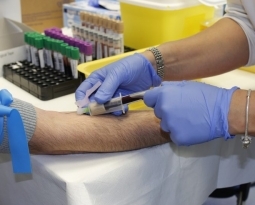Illinois Patent of the Month – February 2021
3-D printing with additive manufacturing machines is limited by the liquid resin dispersal methods. Typical techniques are limited to small size machines which means the 3-D projects are limited in size as well. These techniques use vats of resin and usually have the project at least partially submerged while it’s being produced. These vats are expensive to maintain and only contain a single resin which means multi-material parts are not possible. The submersion also means that cavities are filled and have to be drained out to complete the project. Paxis, LLC has suggested a new design which should help to address these limitations.
This new design would use a computer controlled apparatus to dispense any desired flowable material (e.g. resin or powdered liquids) to create the product layer by layer. The apparatus has a build table where the product is created. The nozzles which dispense the resin are rotatable and connect to a resin supply. In this way, the product is not submerged in an open vat of resin and the cavities are not filled during production. A track extends across the build table and the nozzle moves around on this track to the right places to build the 3D product. An exposure device will also be attached, producing electromagnetic waves to harden the resin. The build table and track can be adjusted for different heights, allowing for larger 3D products to be made. Paxis is regularly working on improving the 3D printing industry with innovative designs.
About Paxis
Paxis focuses on reducing the limitations of current Additive Manufacturing equipment. They know there is a need for extremely large parts and large quantities of smaller parts at faster speeds and plan to make this happen. Creators of the WAV (Wave Applied Voxel): an entirely new, scalable, industrial additive manufacturing process that is conquering the limitations of existing technologies.
Are you redesigning existing technology? Did you know your development work could be eligible for the R&D Tax Credit and you can receive up to 14% back on your expenses? Even if your development isn’t successful your work may still qualify for R&D credits (i.e. you don’t need to have a patent to qualify). To find out more, please contact a Swanson Reed R&D Specialist today or check out our free online eligibility test.
Who We Are:
Swanson Reed is one of the U.S.’ largest Specialist R&D tax advisory firms. We manage all facets of the R&D tax credit program, from claim preparation and audit compliance to claim disputes.
Swanson Reed regularly hosts free webinars and provides free IRS CE and CPE credits for CPAs. For more information please visit us at www.swansonreed.com/webinars or contact your usual Swanson Reed representative.

















